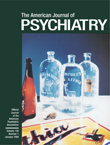Adolescent Depressive Symptoms as Predictors of Adult Depression: Moodiness or Mood Disorder?
Abstract
OBJECTIVE: The authors’ goal was to examine the relationship between subclinical depressive symptoms in adolescence and major depressive episodes in adulthood. METHOD: An epidemiologic sample of 776 young people received psychiatric assessments in 1983, 1985, and 1992. Among adolescents not meeting criteria for major depression, the authors estimated the magnitude of the association between subclinical adolescent depressive symptoms and adult major depression. RESULTS: Symptoms of major depression in adolescence strongly predicted an adult episode of major depression: having depressive symptoms more than two-standard-deviations above the mean in number predicted a two-fold to three-fold greater risk for an adult major depressive episode. CONCLUSIONS: Symptoms of depression in adolescence strongly predict an episode of major depression in adulthood, even among adolescents without major depression.



